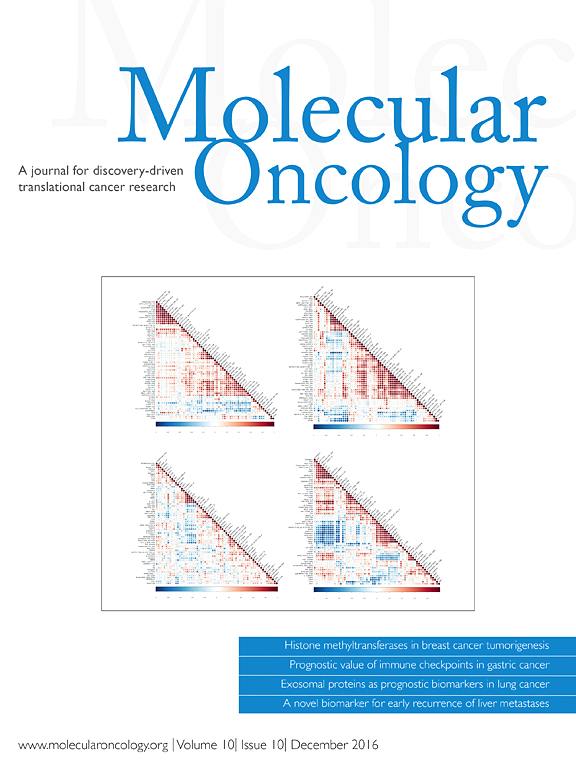ERK1/2 mitogen‐activated protein kinase dimerization is essential for the regulation of cell motility
IF 6.6
2区 医学
Q1 Biochemistry, Genetics and Molecular Biology
引用次数: 0
Abstract
ERK1/2 mitogen‐activated protein kinases (ERK) are key regulators of basic cellular processes, including proliferation, survival, and migration. Upon phosphorylation, ERK becomes activated and a portion of it dimerizes. The importance of ERK activation in specific cellular events is generally well documented, but the role played by dimerization is largely unknown. Here, we demonstrate that impeding ERK dimerization precludes cellular movement by interfering with the molecular machinery that executes the rearrangements of the actin cytoskeleton. We also show that a constitutively dimeric ERK mutant can drive cell motilityERK1/2丝裂原活化蛋白激酶二聚化对细胞运动的调控至关重要
ERK1/2丝裂原活化蛋白激酶(ERK)是细胞基本过程(包括增殖、存活和迁移)的关键调节因子。磷酸化后,ERK 会被激活,其中一部分会二聚化。ERK活化在特定细胞事件中的重要性已被广泛证实,但其二聚化所起的作用在很大程度上还不为人所知。在这里,我们证明,通过干扰执行肌动蛋白细胞骨架重排的分子机制,阻碍 ERK 二聚化可阻止细胞运动。我们还证明,组成型二聚态ERK突变体本身就能驱动细胞运动,这表明ERK二聚化对于诱导细胞迁移既是必要的,也是充分的。重要的是,我们揭示了支架蛋白激酶抑制剂 Ras 1(KSR1)是通过酪氨酸激酶受体作用的外部激动剂具有诱导 ERK 二聚化能力并随后释放细胞运动能力的关键因素。临床数据显示,KSR1 的高表达水平与乳腺肿瘤的转移潜力和不良演变相关。总之,我们的研究结果表明,ERK 二聚化和 KSR1 是调节细胞运动和乳腺肿瘤扩散的重要因素。
本文章由计算机程序翻译,如有差异,请以英文原文为准。
求助全文
约1分钟内获得全文
求助全文
来源期刊

Molecular Oncology
Biochemistry, Genetics and Molecular Biology-Molecular Medicine
CiteScore
11.80
自引率
1.50%
发文量
203
审稿时长
10 weeks
期刊介绍:
Molecular Oncology highlights new discoveries, approaches, and technical developments, in basic, clinical and discovery-driven translational cancer research. It publishes research articles, reviews (by invitation only), and timely science policy articles.
The journal is now fully Open Access with all articles published over the past 10 years freely available.
 求助内容:
求助内容: 应助结果提醒方式:
应助结果提醒方式:


